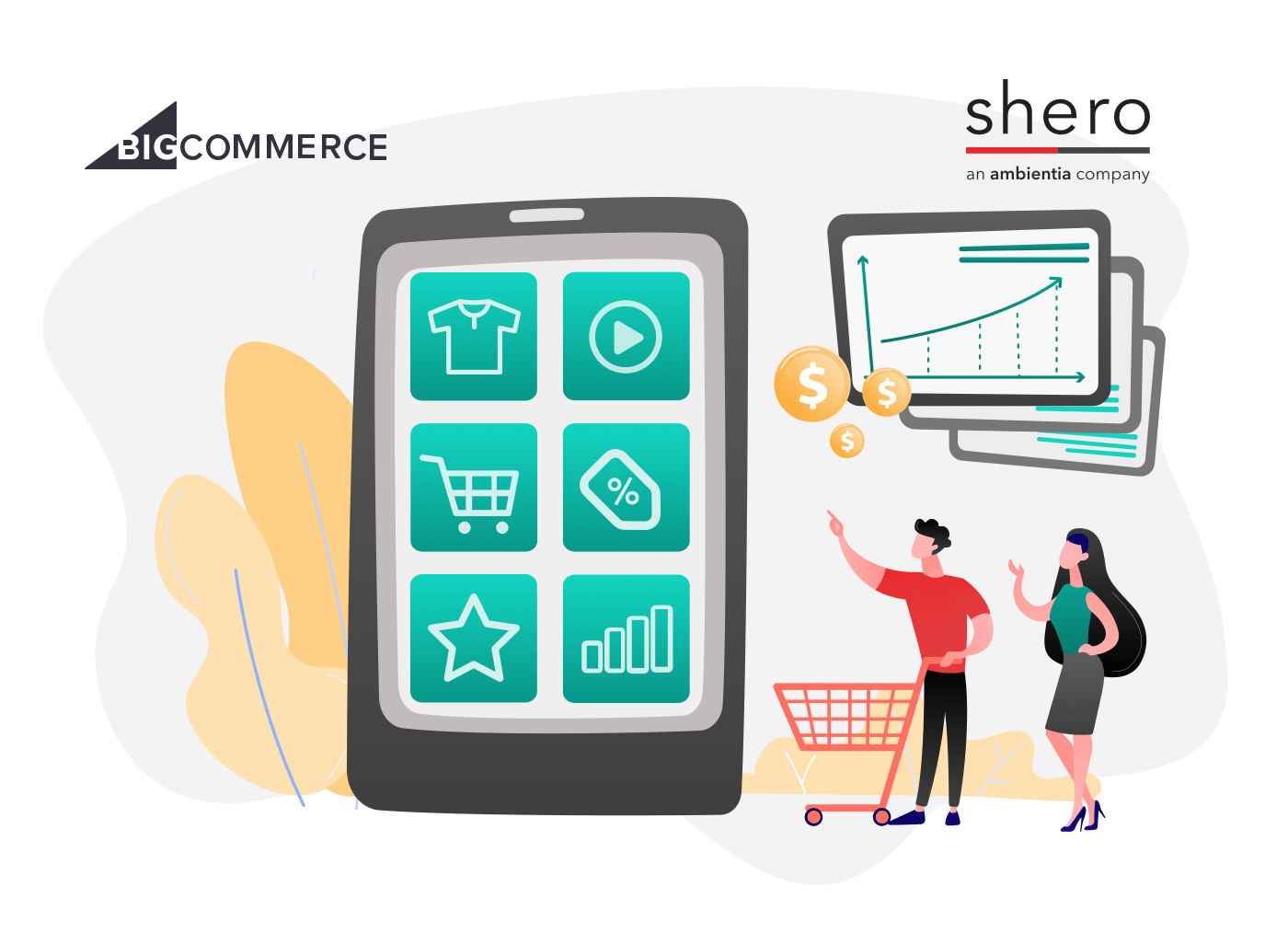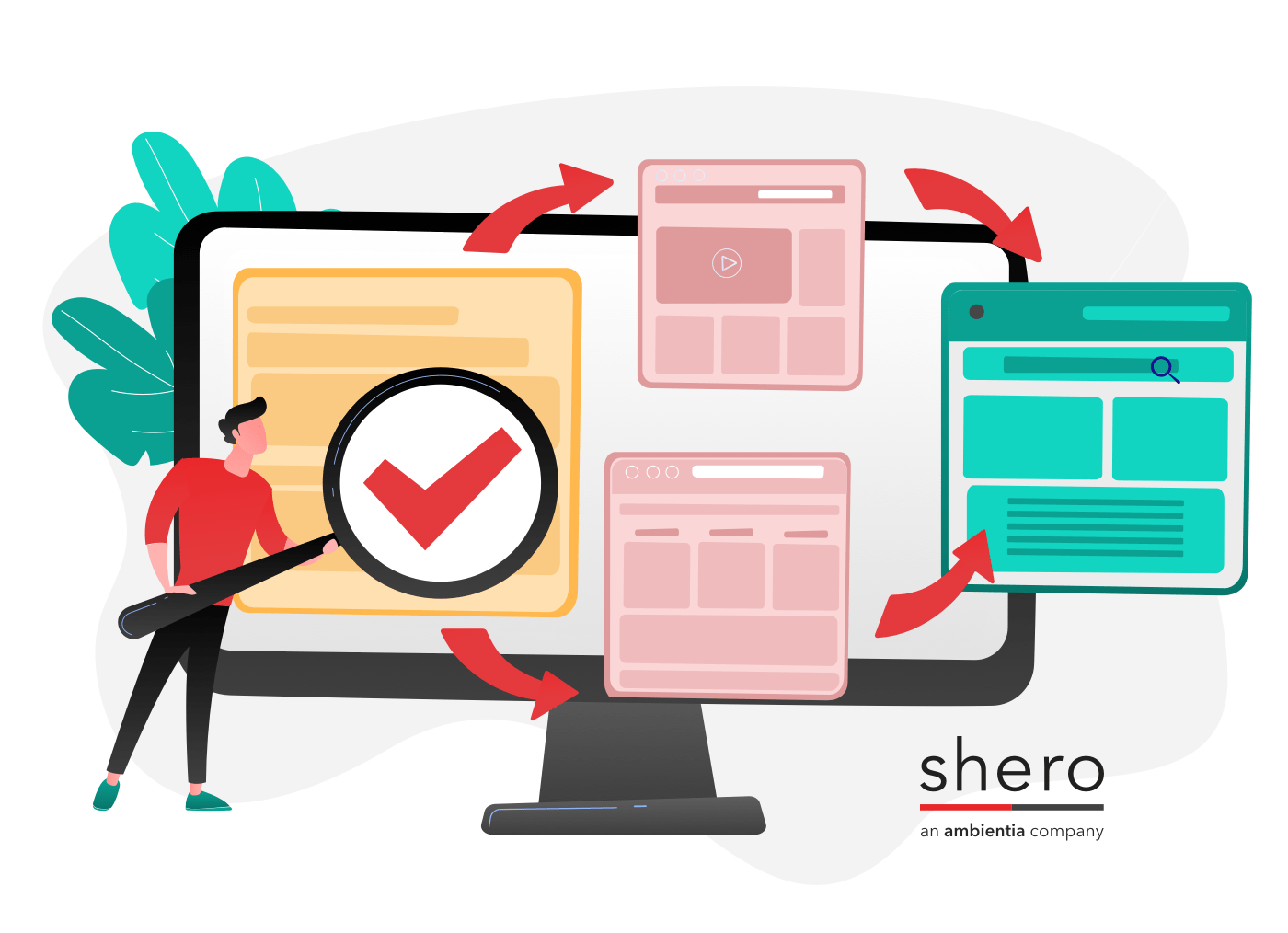High-volume eCommerce requires a robust and flexible platform. Two contenders are Magento EE and ShopifyPlus. Are these two an apples-to-apples comparison? Let’s find out. While each platform has a less-powerful version, Magento CE and Shopify, Magento Enterprise Edition and ShopifyPlus are more suitable for high-traffic stores.
First, let’s begin with the main differences between the two. Magento is open-source, while Shopify is proprietary. Magento is more complex but highly scalable and customizable. The Magento code base can be installed and run on any suitable server. Just like other popular open-source platforms, Magento’s functionality can be expanded by add-on modules, also known as extensions, made by creative developers and extension companies. This makes Magento infinitely flexible to suit nearly any business need. Magento has B2B support and functionality like multistore, tiered pricing, logistics and fulfillment capabilities.
Shopify, on the other hand, is owned by Shopify, Inc., a publicly traded company and is the preferred platform for non-technical merchants. In addition to having a fast learning curve, ShopifyPlus’ implementation, and onboarding is faster than Magento’s. Shopify is sold as a SaaS (Software as a Service) software and it can be run only on Shopify’s servers. As a result, the number of available extensions, or Apps as the Shopify community calls them, is smaller than Magento’s. ShopifyPlus Apps can be created by developers once a developer has opened a partner account with Shopify. Apps created for Shopify are labeled as Private and Public. Private apps can be licensed only to one webste, while Public apps are sold on the Shopify Marketplace.
Market Share and Growth
Shopify is four years older than Magento, but Magento has enjoyed significant market share for most of its existence. As of March 2016, Magento (all versions) has 29% of the market; Woo Commerce had 27%, and Shopify had 11%. The larger-scale advanced Magento EE has 8.7% of the market; Shopify is shy about giving out statistics on their comparable Plus platform.
Shopify has recently become the faster-growing platform, which increased 124% between 2013 and 2014. This trend seems to have continued even after since Magento introduced its revamped platform, Magento 2, in November of 2015. This may be a plus or a minus. Shopify hosts and manages ALL of these sites. There is a great deal riding on these servers. If something goes wrong, the entire system may be affected. Hosting for Magento installations are independent and therefore, not reliant on a single company’s competence.
Ecommerce Functionality
Like any professional eCommerce platform, both Magento EE and ShopifyPlus offer basic store functionality such as page management, complete product management, shopping cart, checkout options, shipping choices, usable reports, etc.
As the store is setup up and evolves over time, requests for advanced online store functionality will come in. These can be functionality like additional checkout options, drop shipping, additional payment gateways, reviews, advanced and intelligent couponing and data-driven marketing actions. These additions could make a big difference to your bottom line. If they aren’t native to your eCommerce platform, you will need an extension or module to make it happen. As of June 2016, ShopifyPlus had 539 apps in the App Store, and Magento has 9486 modules in Magento Connect. It’s possible that that special bell/whistle you want is available in Shopify, but it’s 17 times more likely to be available as a Magento module. For large eCommerce store owners, one or two new features can mean a good deal of extra revenue. Magento’s claim to fame is its flexibility.
MAGENTO vs SHOPIFY
 |
 |
|
| Language | PHP, ZEND | LIQUID |
| Code source | Open-source | Proprietary-source |
| Customization | Fully-customizable | Prepared themes not fully-customizable |
| SEO | Better SEO since you have file structure access | not as flexible with SEO |
| Payment Gateway Extensions | 906 | 41 (USA) |
| Attributes | Unlimited | Limited |
| Product Types | Simple, Grouped, Downloadable, Bundled, Virtual, Configurable | Simple, Configurable |
| Promotion Rules | Complex Promotion rules | Simple Promotion rules |
| Customer Groups | Many groups | Done only with tags |
| Admin Dashboard | Complex, can make lots of changes to the functionality. | Simple, more for simple store management. |
| Theme Structure | Allows override without touching core files. | Difficult to be overridden, have to modify core ones or add other templates. |
| Performance | Slower then Shopify | Faster |
| Functionality | Add functionality using modular model (Modules). | Can add functionality only by using API-s. |
| Sitemap | Automatically generated | Automatically generated |
| Database | Fully Manageable | Closed |
| Security | Can be improved via patches and other 3-rd party modules. | Handled by Shopify |
| Multilanguage | Built in | No |
| Multistore | Excellent multi store capability | No |
| Wholesale | Full wholesale capability, using an extension or Magento’s B2B Module | Limited |
| Blogging | Using a free plugin/extension | Integrated |
| Target group | Big merchants | Small to medium merchants |
| Hosting | Merchant chooses their own hosting environment | Hosted by Shopify |
| Hosting Cost | Depends on the size of the business and website. Ranges from $79 – $5K a month | Part of the annual license |
| Navigation & Filtering | Full access in customizing categories and filters. | Using only default ones, integrating 3-rd party apps help but still not fully customizable. |
| Inventory Management | Fully customizable inventory interface where you can edit products, their categories etc, | Simple inventory interface |
| License | Magento EE starts at $20000 annually | Shopify Plus annual license fee $24000 |
| Developer Expertise | Very Advanced | Medium to Advanced |
| Popularity / Marketshare | As of March 2016, 29% of the e-Commerce websites run on Magento | As of March 2016, 11% of eCommerce websites run on Shopify |
| Support | Awesome Global Community (24-7) | Smaller Support Community |
| Latest Versions | Magento 2.1.2 | Shopify Plus |
| POS Integration | Good POS Integration | Strong POS Integration |
| Built in Payment Gateway | No Native Payment Gateway | Optional Payment Gateway with 2.4% transactional fee |
Scalability
Magento EE/2 is considered to scale better than ShopifyPlus. The entire Shopify network could be affected by peak times and busy seasons. Magento EE/2 is run on many different servers and networks. Each one can be set to scale up in a response to a spike in traffic. Magento is also scalable due to its basis in PHP, one of the most well-known programming languages.
Inventory Management
ShopifyPlus and Magento EE/2 allow an unlimited number of products. Your professional Magento developer will monitor server speed. If so many products are added that the site slows down, the developer can expand the server’s capacity. Shopify hosts and manages the site — if things slow down, they are supposed to handle it.
With Magento EE/2, you can use the same core products in different stores. Let’s say you manufacture furniture. You might open specialized websites aimed at schools, restaurants, hotels, etc. They can each carry overlapping products, and inventory management is greatly simplified. ShopifyPlus can’t do this.
Shipping Charge Calculations
Calculating shipping charges is crucial to a smooth checkout. Customers want wallet-friendly choices. Low balling the shipping charges hurts profits. Both the ShopifyPlus and Magento EE have robust options for calculating shipping. If you need more than what is offered out of the box, an app or an external service like ShipperHQ or ShipStation can be added. When it comes to Magento we highly recommend ShipperHQ as the more robust shipping solution.
Coupons and Discounts
Discount codes and coupons drive sales for many eCommerce businesses. Magento EE and ShopifyPlus include discount code and calculation functionality. You might be surprised at the permutations of couponing and discounts available as apps or modules. Imagine testing: coupons for shoppers who intend to leave; upselling tools; tiered coupons; birthday coupons; gift products; multi discount codes; and more. Both offer approximately the same number of coupon/discount add-ons. While Shopify charges a monthly fee for them, with Magento coupon and discounts come built into the platform. When a outside the box coupon functionality is required, a merchant can buy an extension and pay a one time fee for a license.
Gateway Options
A gateway lets the shopping cart process the payment with the credit card processor. An existing business would typically want to use the same credit card processor they already have an account with. Shopify Plus supports 70 payment gateways. Magento EE/2 supports fewer gateways out-of-the-box, but modules allow you to access more.
Themes and Templates
The “look and feel” of your store is coded in the theme, called “Themes and Templates” in the Magento world. A vast selection is available on both platforms. If you want a free template, you will have much fewer choices in Shopify (24 vs 120+ on Magento Connect). Paid templates max out in cost at around $180 in Shopify. A fully-featured Magento theme goes for as high as several grand, but the majority are comparable in price to Shopify.
Cost of Development and Maintenance
Shopify is not up-front about its pricing for the Plus platform. It provides quotes on demand. One blogger estimated it starts at around $24,000/year. This fee includes a dedicated account manager, hosting, and support. The store owner would also have to cover developers, additional personnel, etc.
Magento EE/2 license starts as low as $20,000/year, plus hosting which can range from $79 to $4500/month, and developer/personnel costs. Magento developers are needed to create and maintain a Magento EE/2 site; he or she will have mastered both PHP and Magento.
Summary
Both, Magento EE and ShopifyPlus are widely used by companies who deal with high-volume eCommerce transactions. Which one is better depends on business objectives and growth really. Both platforms are great for the right type of business. The demand for each has shown their worthiness and proved that they fulfill the market demand and online merchants’ needs.
Shopify Plus is better for the smaller merchant. Magento’s Enterprise Edition flexibility and independence make it a better choice for the long game and higher volume merchants that require wholesale, multi-store and multi-language capabilities. Being open-source and hosted independently, Magento by nature is more scalable. ShopifyPlus has faster implementation time and is cheaper to maintain in the long term.
Gentian, CSO and co-founder of Shero Commerce, guides the company and client digital strategies. He's an expert in technical SEO, Inbound Marketing, and eCommerce strategy.







